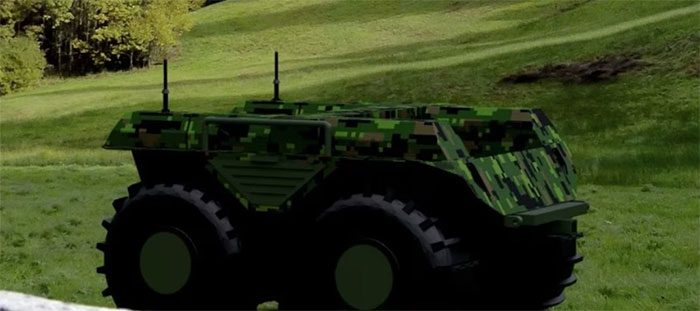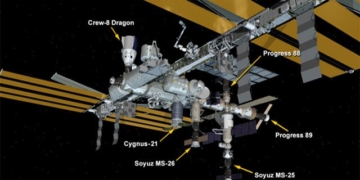The Russian military has developed and deployed a robot named Turtle to transport ammunition to soldiers in combat zones.
Konstantin Bagdasarov, the CEO of the Russian-based robot development company Argo, told RIA Novosti: The Turtle robot has been used in the Luhansk People’s Republic (LPR).

Turtle Robot on the battlefield – (Photo: RIA).
“The prototype of the Turtle robot is currently operational in the LPR, establishing communication lines between Russian military units. Its main tasks are to deliver ammunition and food. Notably, the robot also transports mines for soldier groups,” Bagdasarov told reporters.
According to Bagdasarov, the robot can carry up to 500 kg over a distance of 5 km. Since the robot is electric, it operates silently and does not “glow” in the thermal spectrum. Its modest size—standing less than 1 meter tall—also makes it difficult to detect with the naked eye.
The robot is designed to assist infantry soldiers, and its maximum speed is only 10 km/h, which is why it has earned the nickname Turtle. Bagdasarov also noted that the robot can track radio tags carried by soldier groups.
The company is currently developing additional Turtle robots equipped with electronic maps of the area, remote sensing laser devices for ground scanning, and satellite communication systems. The new versions will be larger and have separate chassis, wheels, and tracks.
There is substantial information indicating that Russia and Ukraine are shifting towards using “primitive robots” to replace soldiers in combat.
Previously, Russia had deployed a combat robot named Marker, capable of autonomously identifying and attacking pre-designated targets.
They are also testing another type of robot on the Ukrainian battlefield called Zubilo, a ground assault vehicle weighing 13.3 tons with a payload capacity of up to 2.7 tons.
Zubilo is resistant to explosive devices and also performs several additional functions, such as distributing ammunition, transporting goods, evacuating wounded soldiers, and even providing power to radios and four-blade helicopters.
The war in Ukraine has become a testing ground for new technologies, with autonomous systems becoming increasingly prevalent. In this context, the role of artificial intelligence (AI) and autonomous systems in the conflict is attracting global attention.




















































